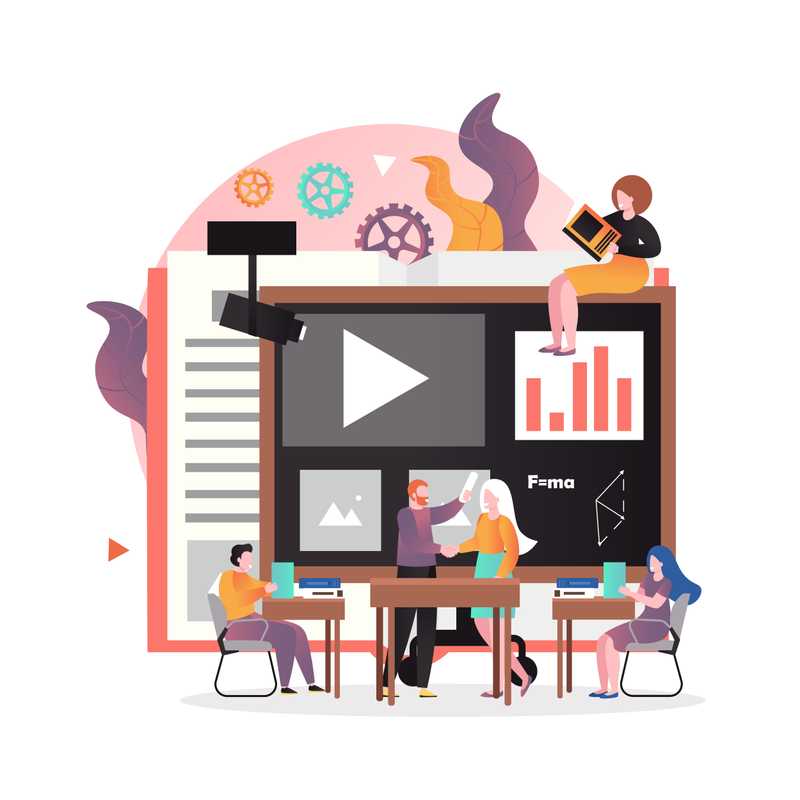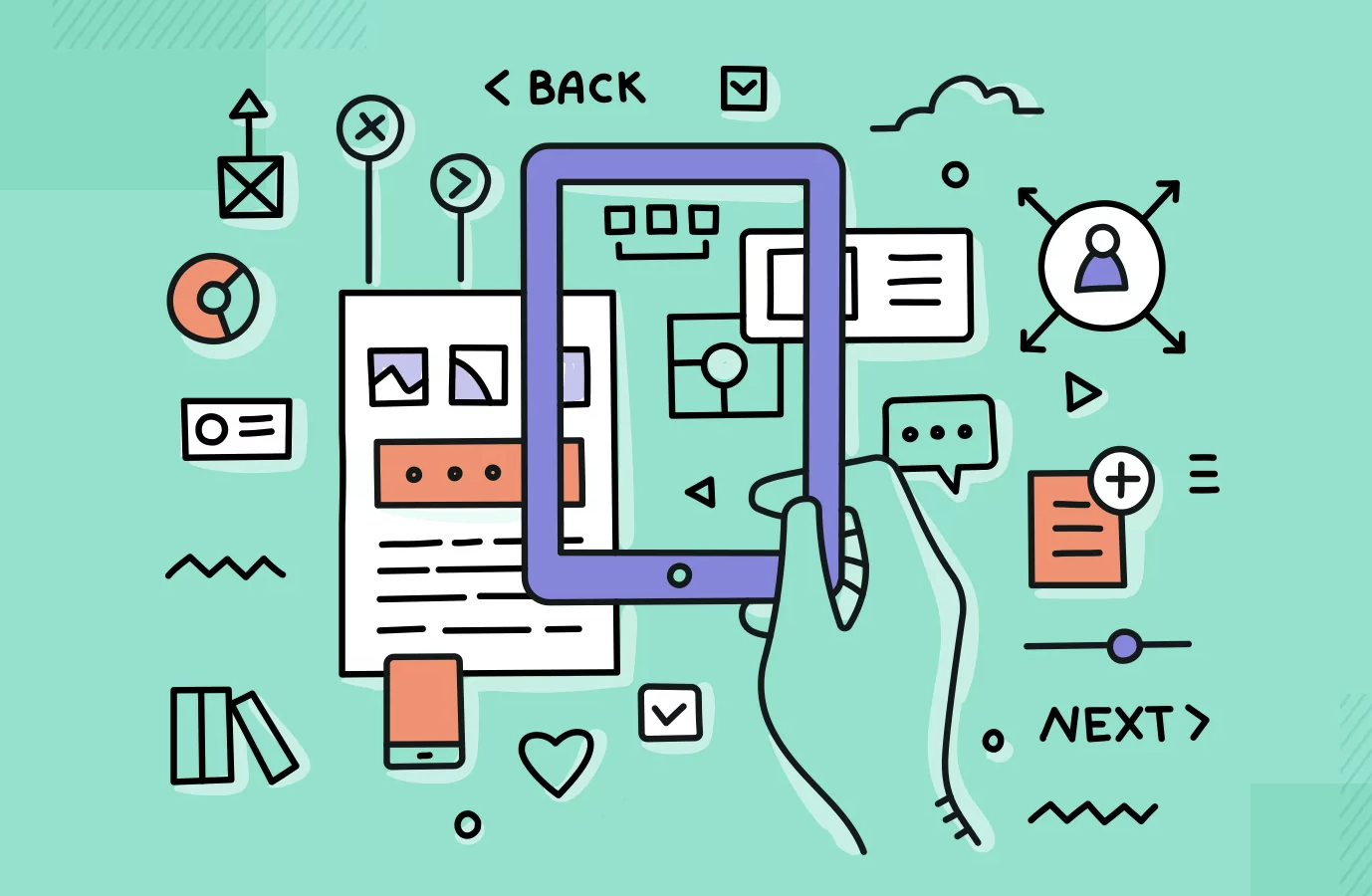Free UX Design Course
Dive into UX design with our free starter course. Transform your creative ideas into user-friendly solutions.
Entertainment and media companies once competed for customers by having the best shows and the broadest distribution networks. But, with the rapid rise of cord-cutting and streaming services, UX design has come to play an outsized role in giving companies a competitive edge.
“The days of ‘more always equals better’ are over,” according to Mark McCaffrey, PwC’s US Technology, Media, and Telecommunications leader. “The future of [entertainment and media] necessitates intense focus on engaging users and converting them into fans.” In others words, McCaffrey said, the overarching theme that should inform entertainment and media strategy going forward is this: “User experience is king.”
As entertainment companies vy for users’ attention and subscriptions, UX/UI designers play a pivotal role in designing engaging and sustainable user experiences that both draw in viewers and keep them around. “Simply capturing the natural growth in consumers…with existing approaches is no longer sufficient,” McCaffrey said. “It’s a whole new—complex and user-oriented—world.”
Learn more about the opportunities, responsibilities, and salaries of UX/UI designers in the entertainment industry here.
How Is UX/UI Design Used in the Entertainment Industry?
At its core, UX/UI design in the entertainment industry isn’t too different from UX/UI design in other industries—the ultimate goal is to create a positive user experience that will lead to stronger user engagement, retention, and, depending on the product or service, conversion. But the specific applications of UX/UI design can differ greatly, and in entertainment in particular, there isn’t a one-size fits all approach, especially because entertainment companies are increasingly trying to cater to the tastes of individual users and make their services as personalized as possible.
Below are some of the ways UX design is employed in the entertainment sector:
- Engagement, engagement, engagement. It’s no longer enough to simply acquire customers, according to UX specialist Andrew Kucheriavy. Entertainment companies are now obsessed with retaining customers, the key to which lies in engagement. “UX is designed to keep you watching,” said Kucheriavy, who noted that features used by Netflix, Hulu, and Amazon such as releasing entire television seasons at one, skipping credits and intros, and automatically starting the next episode are all user experience decisions that maximize engagement. “The reason for that is very simple,” Kucheriavy said. “The more you watch, the less likely you are to cancel your subscription.”
- Personalized experiences. “I recently spoke with UK folks from Hulu and discovered exactly how amazing their tech is,” Kucheriavy said. “By leveraging AI, Hulu’s goal is to make user recommendations so good and so precise, you always have something to watch from the second you open the app.” While recommendation engines are usually the purview of data scientists and machine learning engineers, UX designers help determine how those recommendations are delivered to the end-user, ensuring that they’re intuitive, unobtrusive, and improve the user experience.
- Consistency and accessibility. Consumers have more choice than ever when it comes to where and how they consume media and entertainment, which is why entertainment companies have invested heavily in design teams to ensure consistency of design and accessibility across all platforms. Netflix, for example, has a design team working to improve the user experience on more than 1,000 different interfaces. Many streaming services like HBO Max, have added accessibility features such as audio descriptions for blind or visually impaired users and closed captioning for users with hearing impairments. UX designers find ways to implement these features in a way that best serves the user without getting in the way of the product.
Get To Know Other Design Students
Miranda Mason
Springboard X Blacks In Technology Fellow at Springboard
Kashif Ross
UX Analyst at Circulo
Reyna Martinez
Associate UX Designer at ServiceMax
Entertainment Industry UX/UI Designer Job Roles/Responsibilities

Most UX/UI designers bring technical design skills to the table such as the ability to conduct and make sense of user research; wireframing and prototyping; interactive design; visual communication; information architecture; and proficiency with tools such as Sketch, Invision Studio, Proto.io, Webflow, Balsamiq, and Axure. And while these skills might help a designer build a visually appealing homepage or storefront, UX designers in the entertainment sector need to also be agile problem-solvers who can advocate for different users depending on a company’s changing needs.
For example, in a UX designer job listing at Fox, the entertainment company sought a UX specialist to collaborate on its sports, news, and entertainment brands across web, mobile, and set-top boxes. At HBO Max, the streaming service put out a call for a UX designer who could help the company launch a streaming service for kids—the job involves designing for personalized experiences, kids profiles, content discovery and search, and the experiences of both kids and parents. Meanwhile, LucasFilm listed a UX design role for a UX specialist to work on its virtual reality technologies, building experiences optimized for the company’s connected platforms.
“There is no ‘one-size-fits-all’ recipe,” Kucheriavy said of a UX designer’s role and responsibilities in the entertainment industry. “You need to rely on user interviews, buyer personas, and customer journeys to determine your own magic formula for what your users really want.”
Some of the other key responsibilities of UX/UI designers at entertainment organizations include:
- Conducting and/or using user research to understand what issues/pain points users face when they engage with the entertainment platform
- Conducting design experiments and A/B testing, listening to user feedback, and staying on top of industry trends to develop user-centered design solutions
- Understanding the goals and desired calls-to-action of an organization’s entertainment platform and finding ways to meet those goals while still advocating for the user
- Designing a consistent user experience across mobile devices and desktop platforms
- Collaborating with UX researchers, data scientists, information architects, marketers, and engineers to test, iterate, and launch products and services that satisfy stakeholders
Entertainment Industry UX/UI Designer Salary
Among hiring managers, UX/UI design is one of the top five most in-demand skills, according to a LinkedIn report, with the demand expected to rise throughout 2021. And as entertainment companies look to UX design to give them a competitive advantage, there doesn’t appear to be a slowdown in the hiring of UX/UI professionals in the entertainment industry.
UX/UI designer salaries are typically determined by education, years of experience, location, and organization type. As of 2021, the average base salary of an entry-level UX/UI designer in the entertainment industry is around $75,000. The average base salary of a senior-level UX/UI designer in the entertainment industry is around $102,056.
Since you’re here…
Looking to launch your career in design? In our UI/UX Design Bootcamp, you’ll work 1-on-1 with industry experts to build job-ready skills – on your schedule. 99.5% of our graduates are fully employed in design within 12 months of graduation, and our student reviews back us up. Get dabbling today with our free UI/UX design curriculum. When you’re ready for a job, we’re here.






